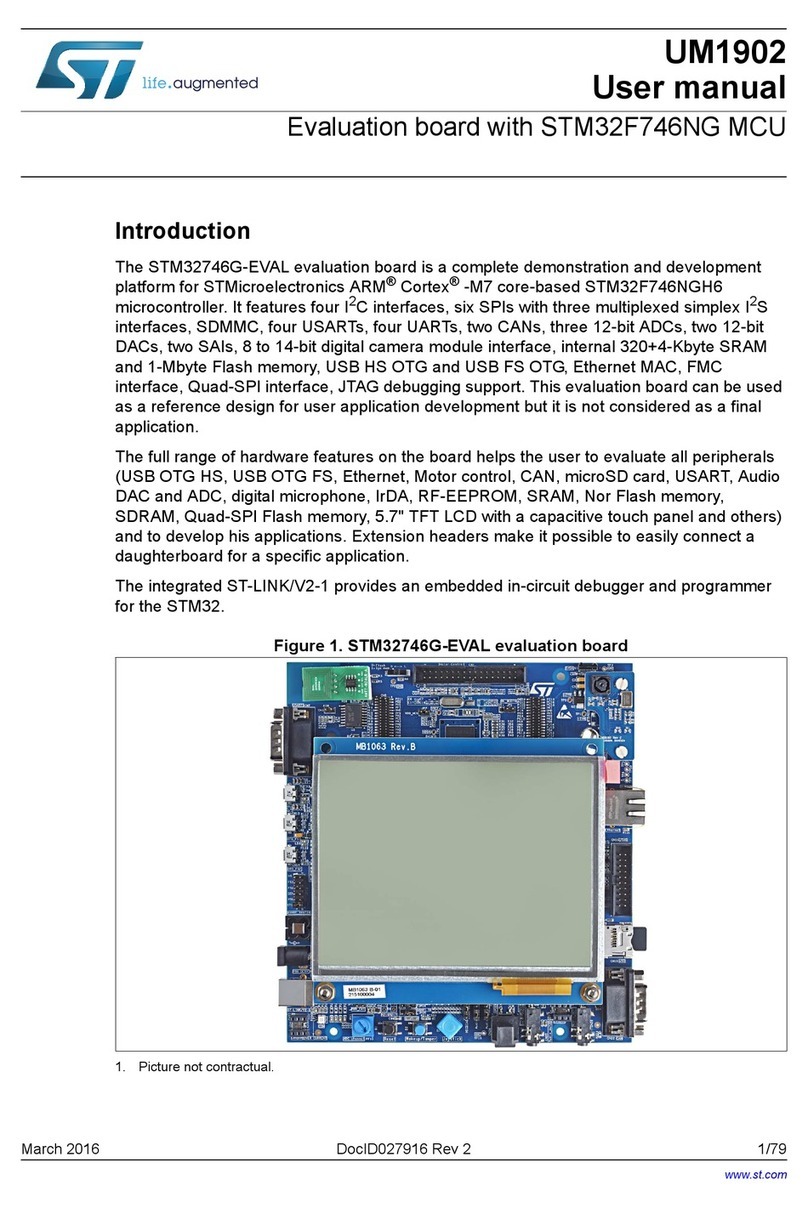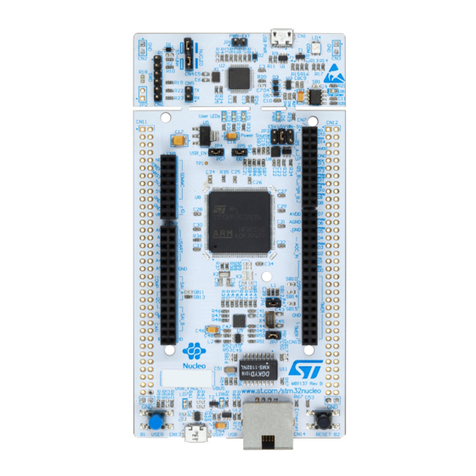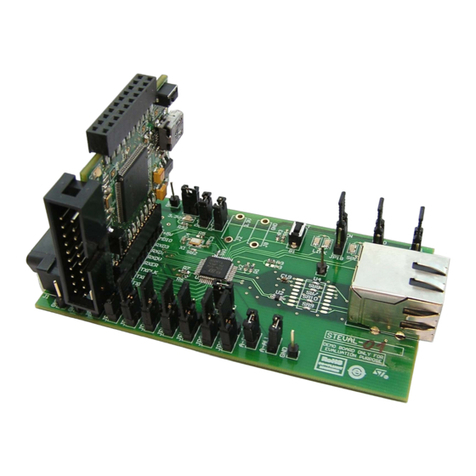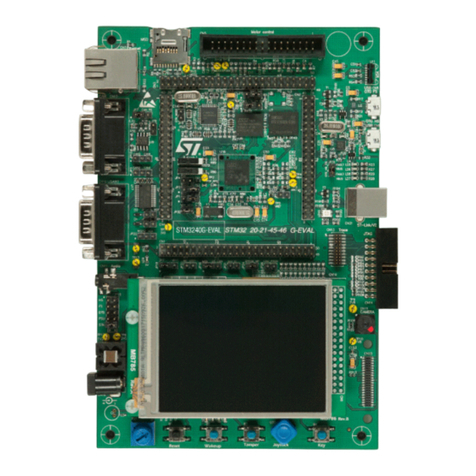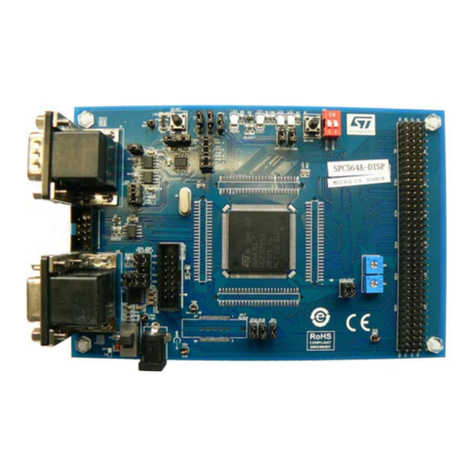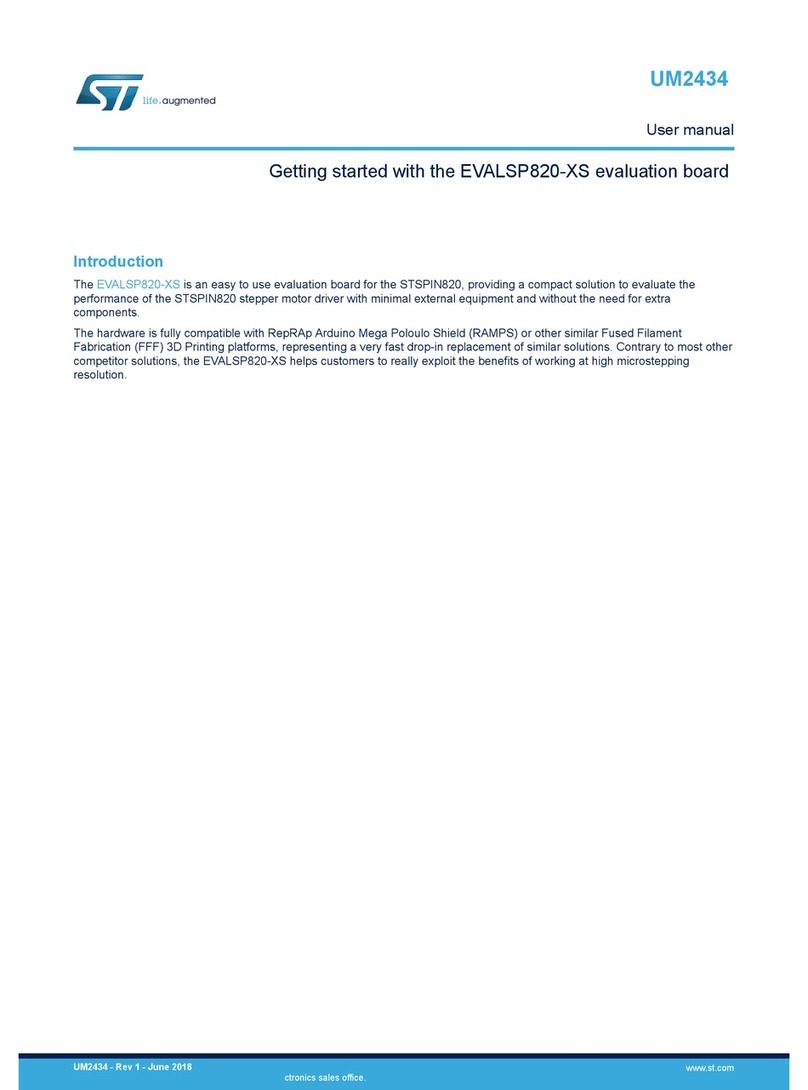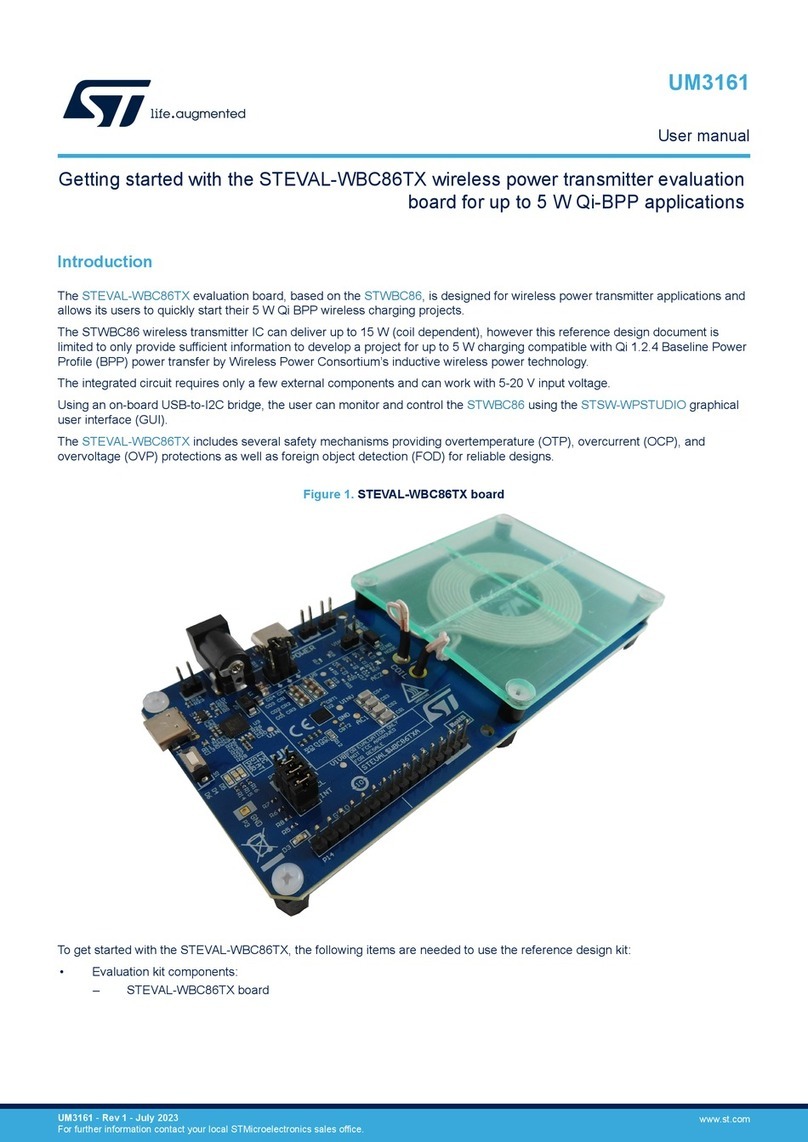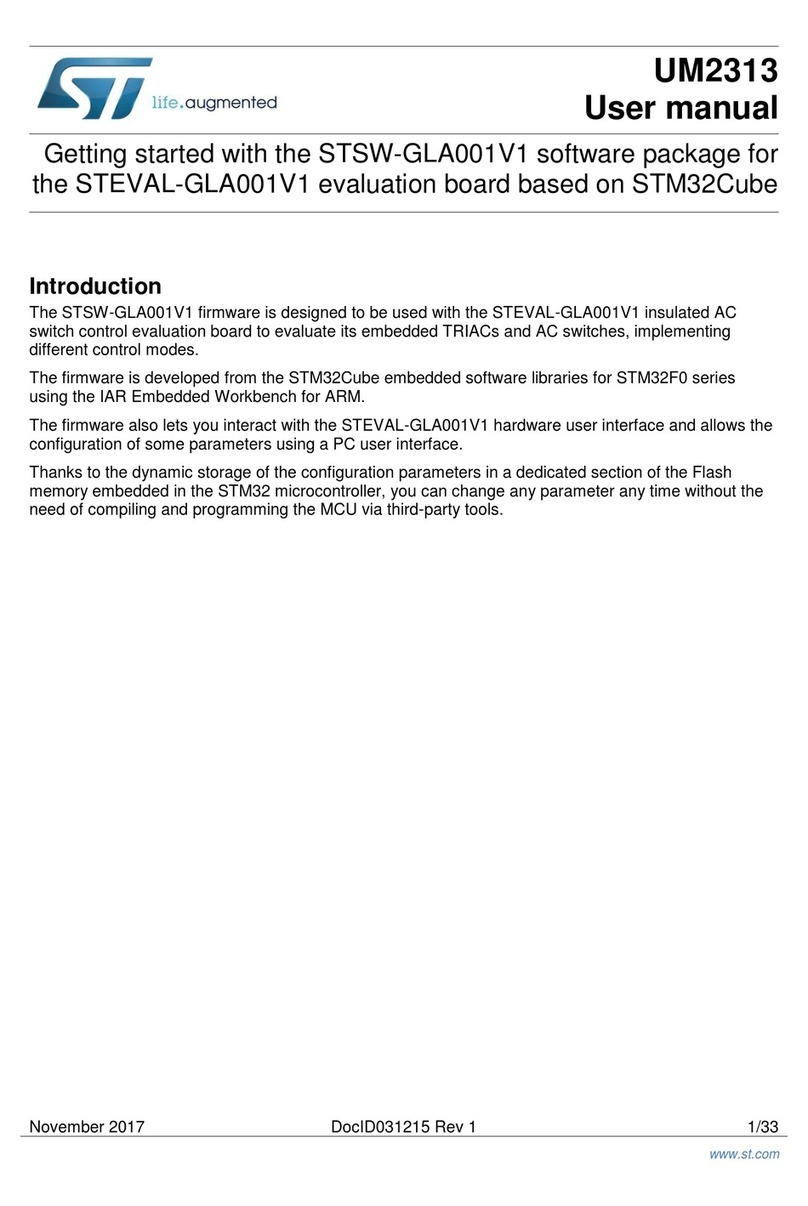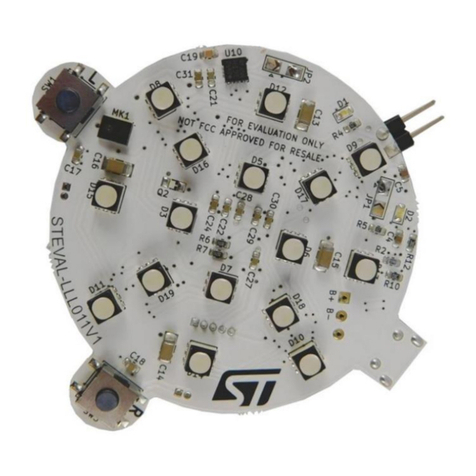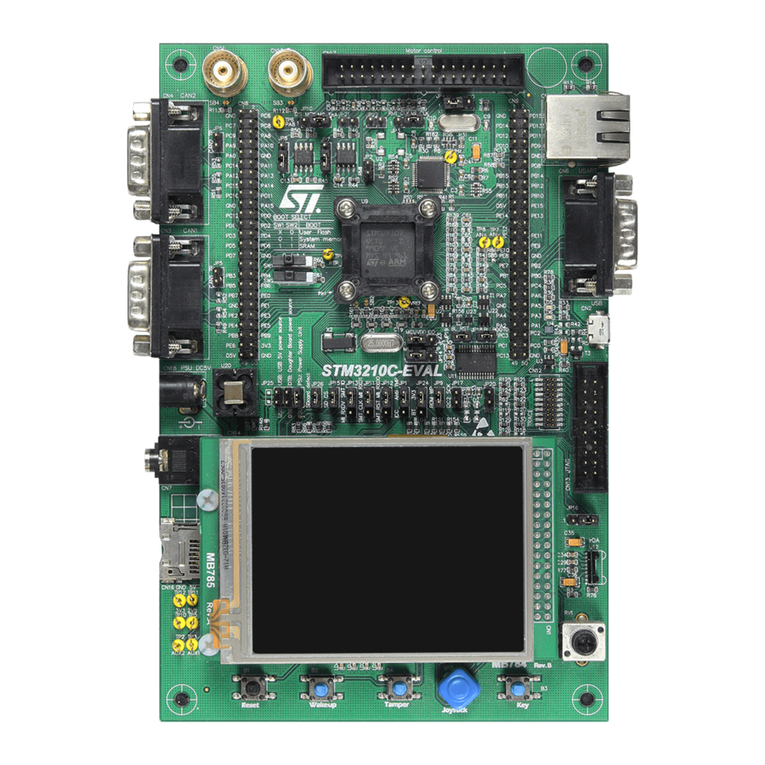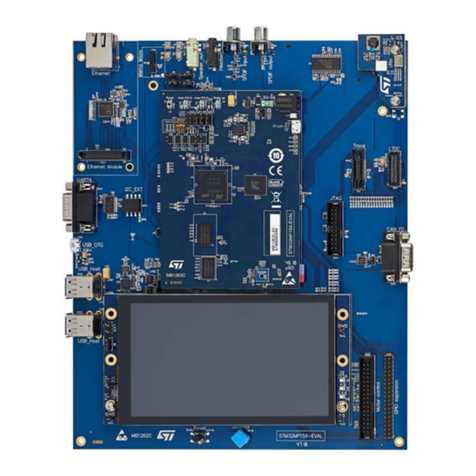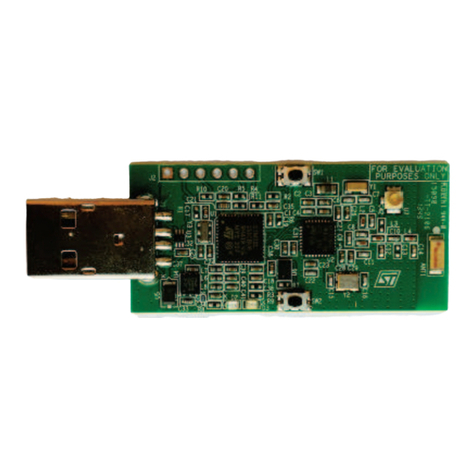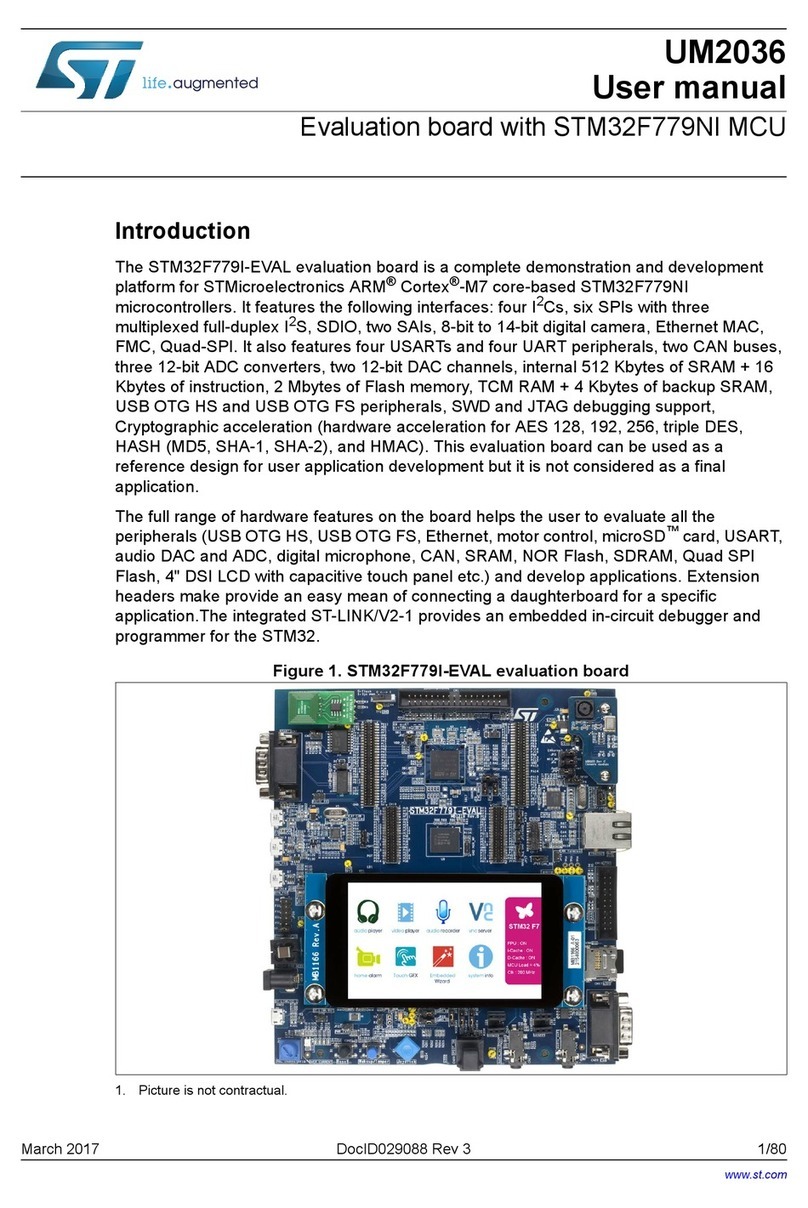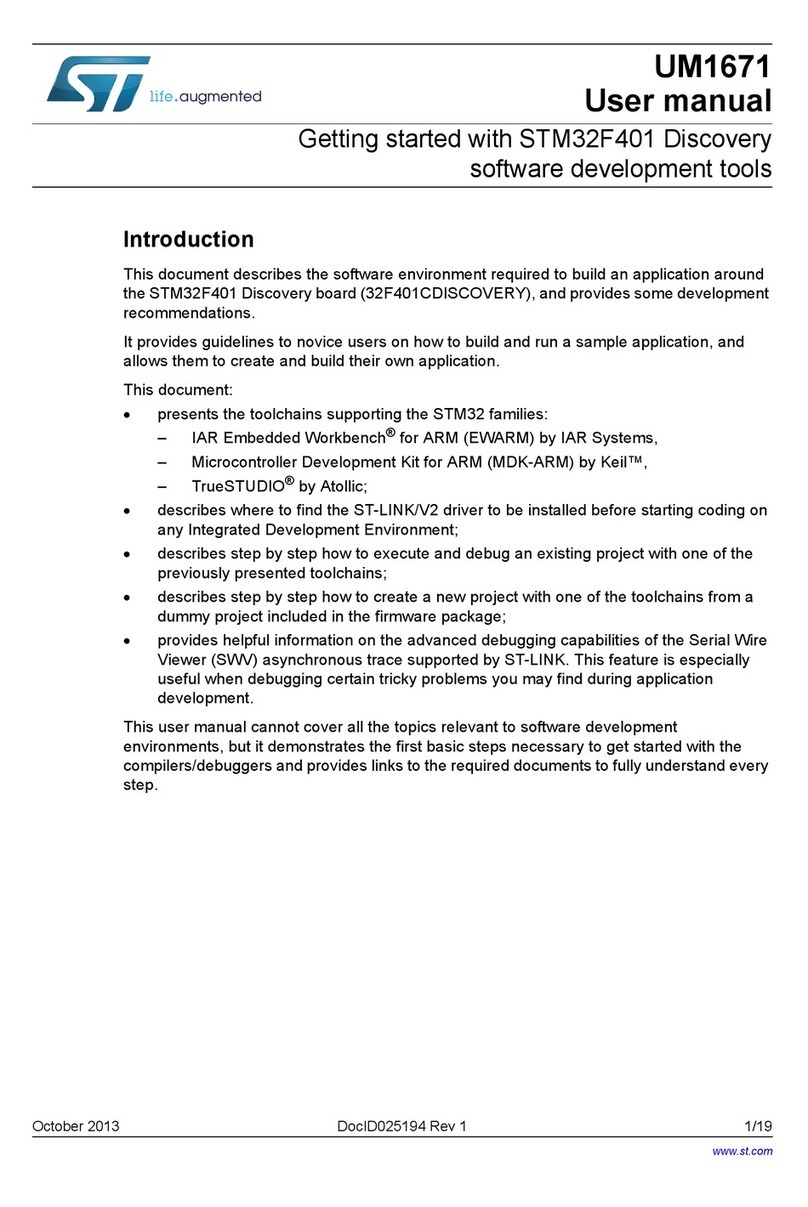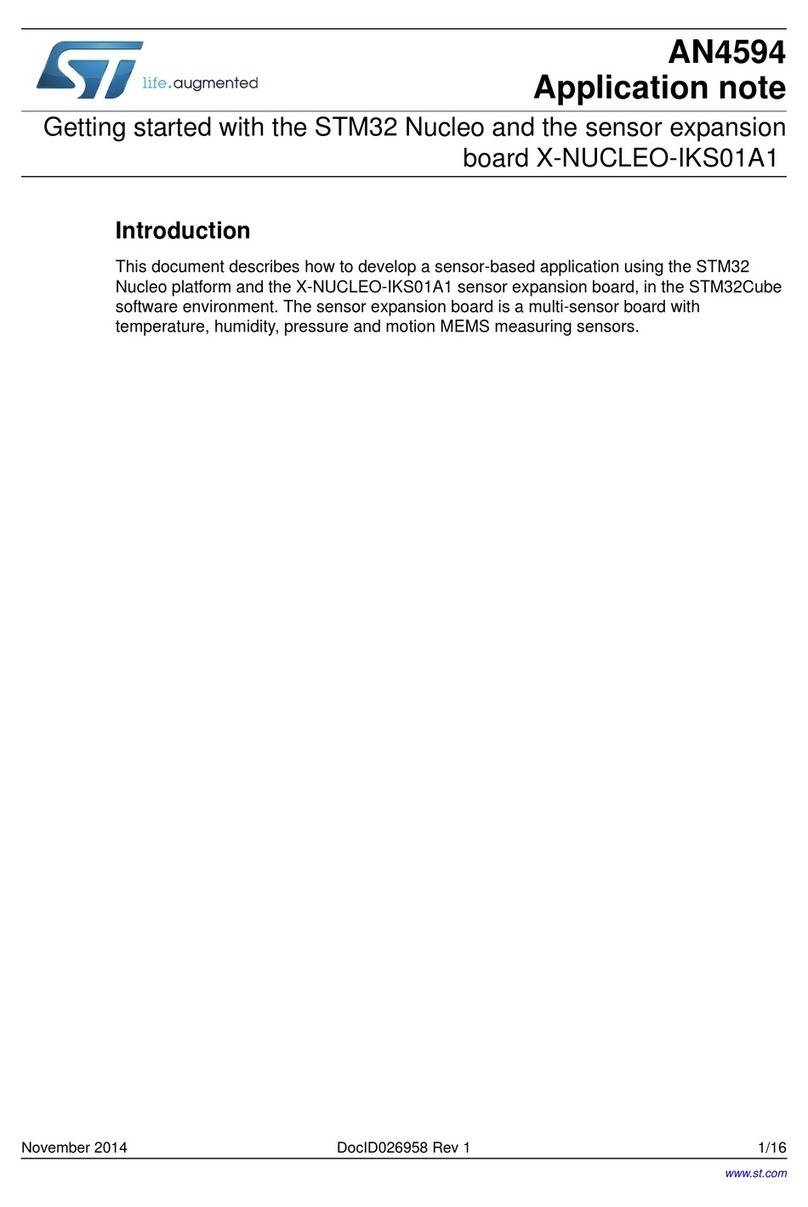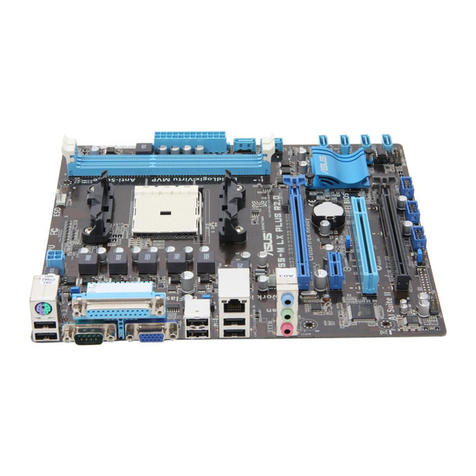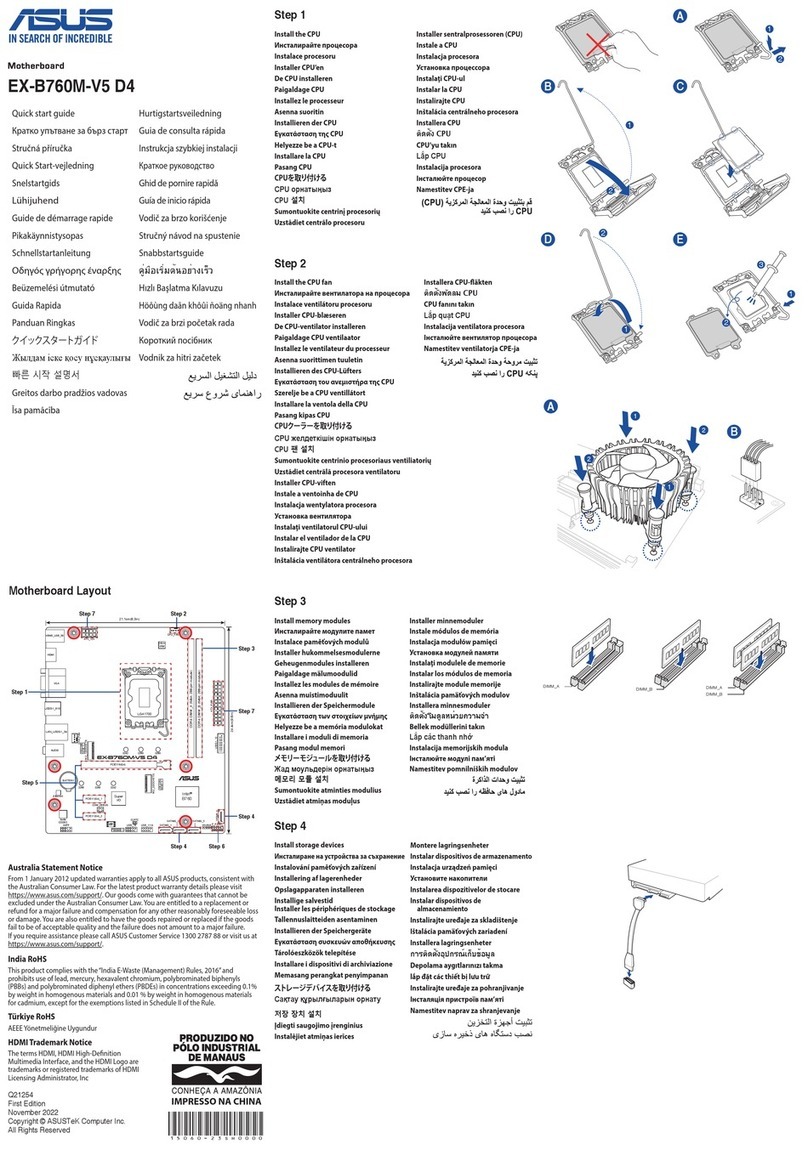
5Bill of materials
Table 1. STEVAL-BLUEPIRV1 bill of materials
Item Q.ty Ref. Value Description Manufacturer Order code
1 1 CN2 N.A. Header 3, HDR1X3
Header, 3-Pin,
2.54 mm (not
assembled)
- -
2 1 CN4 N.A. Header 5, HDR1X5
Header, 5-Pin,
2.54 mm (not
assembled)
- -
3 1 U1 TSU102IST,
MiniSO-8
Nanopower
(580 nA) rail-
to-rail I/O 5 V
CMOS op-
amp
ST TSU102IST
4 1 U2 TS883IST,
MiniSO-8
Rail-to-rail 0.9
V nanopower,
open drain
dual
comparators
ST TS883IST
5 1 U5 STLQ020PUR,
DFN6 2x2
200 mA ultra-
low quiescent
current LDO
ST STLQ020PUR
6 1 CN3 N.A.
Header 2x5,
Header 2x5 1.27
SMD
Header 2x5
1.27 SMD Harwin M50-3600542R
7 1 U3 PIR sensor IRA-
S210ST01 Murata IRA-S210ST01
8 4 C4, C6, C7,
C11
10n, 0603_C, 50 V,
5 % 5%, 50V, C0G Murata GRM1885C1H103JA01
D
9 1 C2 1n, 0603_C, 50 V,
5 % 5%, 50V, C0G Murata GRM1885C1H102JA01
D
10 2 C8, C9 22n, 0603_C, 50 V,
10 %
10%, 50V,
X7R Murata GRM188R72A223KAC4
D
11 1 C10 100n, 0603_C, 50
V, 10 %,
10%, 50V,
X7R Murata GRM188R72A104KA35
D
12 3 C1, C12, C13 10u, 0603_C, 10 V,
20 %
10V, X5R,
20% Murata GRM188R60J106ME47
D
13 2 C14, C15 1u, 0603_C, 10 V,
20 %
10V, X5R,
20% Murata GRM188R60J105MA36
D
14 2 C3, C5 22u, 0603_C, 10 V,
20 %
10V, X5R,
20% Murata GRM188C80J226ME15
D
15 1 R16 0R, 0805_R, 50 V,
1 %
1%, 50V,
100mW,
+-100ppm/K
Vishay / Dale CRCW08050000Z0EA
16 3 R7, R10, R11 680k, 0603_R, 50
V, 1 %
1%, 50V,
100mW,
+-100ppm/K
Vishay / Dale CRCW0603680KFKEA
17 2 R8, R9 390k, 0603_R, 50
V, 1 %,
1%, 50V,
100mW,
+-100ppm/K
Vishay / Dale CRCW0603390KFKEA
18 2 R2, R15 47k, 0603_R, 50 V,
1 %
1%, 50V,
100mW,
+-100ppm/K
Vishay / Dale CRCW060347K0FKEA
UM3001
Bill of materials
UM3001 - Rev 1 page 8/17



